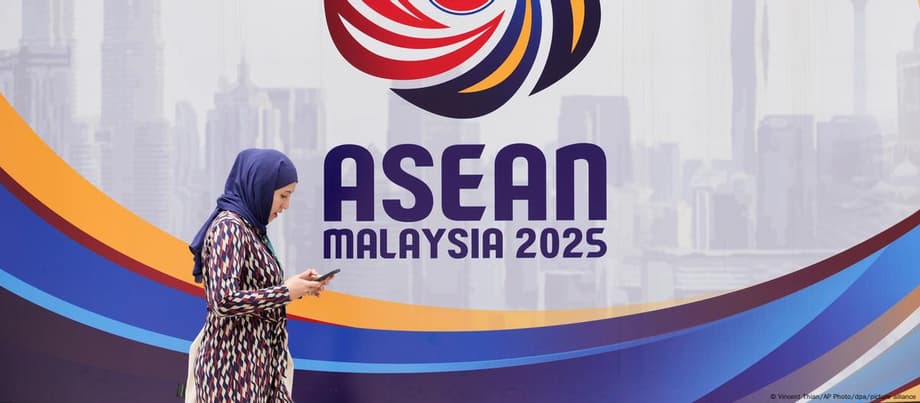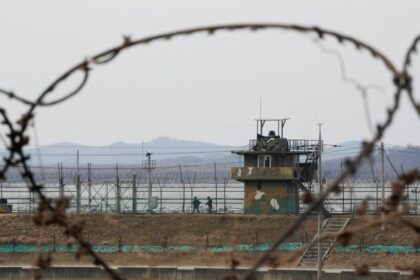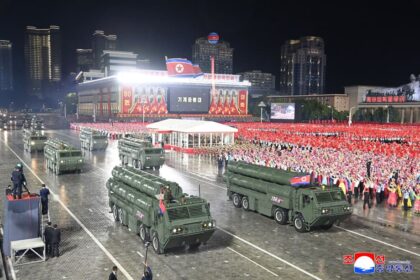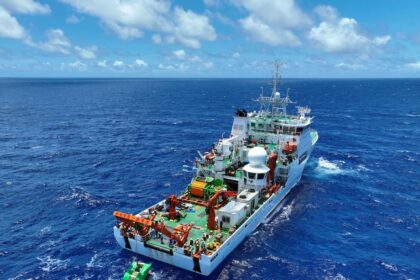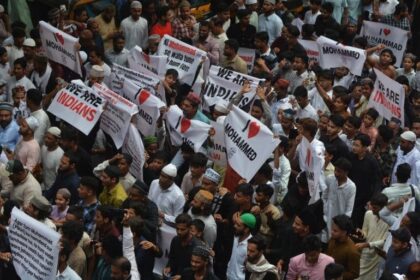Why this summit matters for Southeast Asia
Leaders from across Asia and beyond have gathered in Kuala Lumpur for an ASEAN summit shaped by two urgent realities. The first is an intensifying strategic and economic contest between the United States and China that touches every Southeast Asian capital. The second is the need for ASEAN to prove that it can manage regional flashpoints and keep its diverse members moving in step. This year, the stakes are high. US President Donald Trump and Chinese Premier Li Qiang are both in the room, and their agendas loom over every meeting and bilateral session.
- Why this summit matters for Southeast Asia
- A region caught between giants
- Security flashpoints drive the agenda
- Trade turbulence and the supply chain reset
- ASEAN unity and the Myanmar test
- How member states are positioning themselves
- What leaders are signaling in Kuala Lumpur
- ASEAN centrality under pressure
- What to Know
Behind closed doors and in public statements, ASEAN leaders are balancing diplomacy with hard choices. The bloc will formally welcome Timor Leste as its eleventh member, a milestone that underscores ASEAN’s growing weight. A planned ceremony to mark a peace settlement between Thailand and Cambodia, reached after a deadly border flare up this summer, will give the summit a moment of relief. Yet the broader backdrop is tense. The South China Sea remains a source of confrontation. Rival tariff measures and export controls are reshaping trade. The civil war in Myanmar continues to spill across borders and test ASEAN’s crisis management.
Singapore’s prime minister has warned that unity cannot be taken for granted. Speaking to fellow leaders in a retreat session, Lawrence Wong urged the bloc to hold its ground against pressures to take sides and cautioned that ASEAN’s relevance is on the line if members turn on each other.
Singapore Prime Minister Lawrence Wong said ASEAN will be finished if divided and that the bloc must stand together even as great power rivalry intensifies.
A region caught between giants
For decades, ASEAN has tried to anchor regional cooperation while engaging all major powers. That approach is under strain. Washington frames the Indo Pacific in terms of a rules based order and freedom of navigation. Beijing stresses economic growth and non interference while expanding its clout through investment, trade, and an increasingly capable military. Southeast Asian countries rely on the US for investment and security ties, and on China for trade and growth. Few want to choose between them.
That desire for balance is consistent with long standing ASEAN principles. It also serves national interests. Indonesia, Malaysia, and Thailand work with both sides, seeking investment and technology from China while keeping security and training links with the US and its partners. Vietnam and Singapore deepen defense and economic cooperation with the US and other regional partners while keeping economic links with China open. Cambodia, Laos, and Myanmar lean more heavily on China, especially in financing and infrastructure. The Philippines is tightening security cooperation with the US under its mutual defense treaty, while managing a complex relationship with Beijing.
The result is a careful middle path. ASEAN welcomes inclusive initiatives such as the ASEAN Outlook on the Indo Pacific, which calls for openness, transparency, and dialogue without isolating any partner. The bloc prefers practical collaboration on health, climate, infrastructure, and digital trade rather than rigid alignments. Leaders often say they want both Washington and Beijing engaged, so long as their competition does not harden into rival blocs.
Security flashpoints drive the agenda
Security tensions cast a long shadow over the summit. The South China Sea is a central focus. China’s coast guard and maritime militia continue to operate near disputed features, while ASEAN claimants press their rights under international law. The Philippines faces near daily friction in its exclusive economic zone. Vietnam and Malaysia track frequent incursions near their waters. Indonesia has stepped up patrols north of the Natuna Islands to deter illegal fishing and unauthorized drilling.
South China Sea and a long delayed code of conduct
ASEAN and China say they want to accelerate negotiations on a code of conduct for the waterway. The goal is to establish common rules to reduce risks and manage incidents. Progress has been slow for years, and the gap between legal positions remains wide. Most Southeast Asian states cite the United Nations Convention on the Law of the Sea as the basis for maritime rights, including exclusive economic zones that extend 200 nautical miles from shore. China’s sweeping map claims, recently updated to a ten dash line, overlap with those zones and were rejected by a 2016 tribunal ruling under UNCLOS. That legal clash continues to fuel tension on the water and at the negotiating table.
Beijing’s message in Kuala Lumpur is that the region should step back from confrontation. Premier Li Qiang has warned against bloc politics and called for dialogue to manage differences.
Chinese Premier Li Qiang told regional leaders that countries should oppose taking sides, oppose bloc confrontation, and avoid a new Cold War.
Allies, partners, and deterrence
Washington is signaling continued presence and support for allies. The US stresses freedom of navigation, the right of ships and aircraft to operate lawfully, and the need to resist efforts to change the status quo through coercion. It is also deepening defense and coast guard ties with several Southeast Asian partners and running joint patrols and exercises.
US officials have framed this as a commitment to international law rather than a bid to force choices. The message at the summit echoes past statements on the need to defend legal norms at sea.
US Vice President Kamala Harris reaffirmed that the US will work with Southeast Asia to uphold the rules based international order, including in the South China Sea, and will respond to unlawful maritime claims and provocative actions.
Trade turbulence and the supply chain reset
Economic stakes are as high as the security ones. The trade war between the US and China has hardened into a set of tariffs and export controls that ripple through Southeast Asian supply chains. ASEAN economies are export driven and deeply integrated into global manufacturing networks. Higher tariffs on goods shipped to the US can dampen growth and complicate investment decisions. Controls on advanced semiconductors and key equipment affect firms that assemble or test components in Malaysia, Singapore, Thailand, and Vietnam.
Leaders in Kuala Lumpur are looking for ways to steady the ship. The summit agenda features an unusual joint economic session on trade exposure and the impact of tariff measures that range from 10 to 40 percent. Several ASEAN states have sought bilateral deals to blunt tariff shocks. Those arrangements buy time but do not replace a broader strategy. Regional forums can play a role. The first in person Regional Comprehensive Economic Partnership gathering since 2020 is taking place alongside the summit. RCEP brings together ASEAN with China, Japan, South Korea, Australia, and New Zealand, and aims to harmonize tariffs and rules of origin.
RCEP, rare earths, and an open trade pitch
China has used this week’s spotlight to push for open trade and deeper regional integration. Premier Li has called for resistance to protectionism and renewed efforts to expand and implement RCEP. Beijing’s control over the supply of rare earths, essential to electric vehicles and high tech manufacturing, gives it leverage in any trade standoff. Regional partners are looking to diversify supply chains, increase transparency, and reduce one way dependencies while keeping markets open where possible.
ASEAN’s blend of trade arrangements, from the ASEAN Free Trade Area to RCEP, offers tools to keep commerce flowing even as global protectionism rises. Many member states want the US to complement its security engagement with a positive economic agenda. Digital trade standards, services market access, and infrastructure finance have all surfaced as areas that can deliver growth without forcing countries to line up behind one power or the other.
ASEAN unity and the Myanmar test
The bloc’s cohesion is under pressure from crises within its own ranks. Myanmar’s civil war has destabilized border regions, displaced civilians, and fueled crime networks that reach into neighboring states. ASEAN’s Five Point Consensus calls for an end to violence, humanitarian aid, and inclusive dialogue among all parties. Implementation has lagged, and frustration has grown in capitals across the region.
Singapore has urged the group to hold firm to a principled approach. Prime Minister Wong has called for de escalation, humanitarian access, and sustained engagement with all key stakeholders in Myanmar. He also voiced support for extending the ASEAN Special Envoy’s mandate to keep diplomacy moving. These are sensitive questions, since ASEAN’s tradition is to avoid interference in internal affairs. The limits of that approach have become clearer as conflict persists and spills across borders.
Regional stability also depends on managing disputes among members. The Thailand Cambodia peace arrangement provides a rare bright spot. Malaysia is playing a convening role, drawing on personal ties at the highest level to help shepherd the accord. Trump’s presence at the signing will give the moment added visibility.
How member states are positioning themselves
Southeast Asia is not monolithic. The strategic positions of ASEAN countries reflect their geography, history, and economic ties. A few broad patterns stand out. Some states lean into closer security links with the US and its partners while keeping trade with China. Others hedge, seeking to avoid friction with either side. A third group, constrained by economic dependence or domestic politics, aligns more closely with Beijing.
The Philippines has moved to strengthen its security posture. It has expanded access for US forces under the Enhanced Defense Cooperation Agreement, stepped up joint patrols, and reiterated that the mutual defense treaty applies to armed attacks on its forces or public vessels in the South China Sea. Manila also wants to keep economic ties with China. That balance is hard to maintain when tensions flare at Second Thomas Shoal or near Scarborough Shoal.
Indonesia’s instinct is to avoid binaries. Jakarta works with the US on defense capacity and training, supports freedom of navigation, and promotes ASEAN led processes. It also partners with China in infrastructure and trade, and seeks to direct foreign investment to its electric vehicle and battery sectors. Malaysia follows a similar track, signaling neutrality while expanding trade and investment with both powers.
Vietnam deepens defense dialogue with the US, Japan, India, and Australia, engages European partners, and builds its domestic industrial base, all while managing a complex relationship with China across trade and maritime disputes. Singapore prioritizes a strong US presence for regional balance and continues to welcome trade and investment from China. Cambodia and Laos rely heavily on Chinese financing and political support. Myanmar’s dependence on China has grown as Western ties have frayed. These differences make consensus inside ASEAN harder, yet they reflect practical national calculations rather than ideology.
What leaders are signaling in Kuala Lumpur
Public remarks at the summit show the messaging from key players. Manila is seeking to calm tensions while holding firm on maritime rights. Philippine President Ferdinand Marcos Jr. underlined that his country aims to defend its sovereignty without provoking conflict.
Philippine President Ferdinand Marcos Jr. said the Philippines does not seek conflict, but has a duty to meet any challenge to its sovereignty.
Malaysia is positioning itself as a bridge builder. Prime Minister Anwar Ibrahim has made clear that ASEAN will keep engaging both Washington and Beijing and that neutrality is a deliberate choice, not indecision.
Malaysian Prime Minister Anwar Ibrahim said ASEAN will engage with both the United States and China and is not tilting in any way, adding that maintaining good relations with both powers makes sense for the region.
These statements align with ASEAN’s longstanding preference for inclusivity and practical cooperation. They also reflect political realities. Southeast Asia counts the US as its largest investor and China as its largest trading partner. Leaders want both to stay engaged, and they want room to make decisions that fit local needs rather than great power agendas.
ASEAN centrality under pressure
ASEAN’s concept of centrality rests on the belief that the region can set the agenda and convene partners around common interests. The presence of Trump and Li at this summit is a reminder that ASEAN remains a vital forum. It is also a stress test. Can the bloc manage differences among its own members while offering a platform where rivals talk rather than escalate?
Scholars and practitioners in Kuala Lumpur argue that ASEAN’s future relevance will depend on two things. The first is unity on baseline principles, such as respect for international law at sea and a commitment to peaceful dispute resolution. The second is delivery on issues that matter to citizens. That means concrete progress on connectivity, the green economy, digital standards, and public health, not only communiques. Malaysia’s chairmanship theme of inclusivity and sustainability points in that direction.
The case for staying the course was put succinctly by a regional expert who sees ASEAN’s strength in its convening power and steady diplomacy.
Professor Zainal Abidin Sanusi said ASEAN’s strength lies not in taking sides, but in building bridges, and that its unity and values based leadership will determine its relevance for the next generation.
What to Know
- US President Donald Trump and Chinese Premier Li Qiang are attending the ASEAN summit in Kuala Lumpur, raising the stakes for diplomacy on security and trade.
- ASEAN plans to welcome Timor Leste as its eleventh member and to spotlight a peace settlement between Thailand and Cambodia after recent border clashes.
- South China Sea tensions dominate security talks, with ASEAN and China aiming to speed up negotiations on a code of conduct.
- Chinese Premier Li Qiang warned against taking sides and urged countries to avoid a new Cold War; US officials reaffirmed support for a rules based order at sea.
- Tariffs and export controls from the US China trade war weigh on Southeast Asian economies; leaders are exploring ways to protect supply chains and grow trade.
- RCEP partners met on the sidelines to push implementation and expansion as a counterweight to protectionism.
- ASEAN unity is under strain from Myanmar’s civil war; leaders called for de escalation, humanitarian access, and sustained diplomacy.
- Member states are pursuing different strategies, from closer US security ties to deeper Chinese economic engagement, while trying to avoid a binary choice.
- Malaysia’s chairmanship highlights inclusivity and sustainability, with calls to deliver tangible gains in the green economy, digital standards, and connectivity.
- ASEAN’s centrality depends on unity around legal norms and practical cooperation that keeps both Washington and Beijing engaged without polarizing the region.


